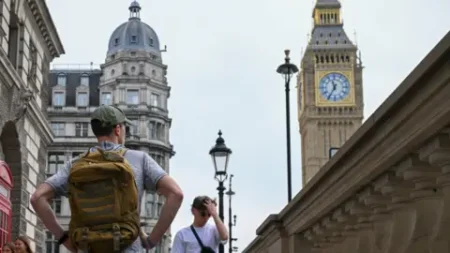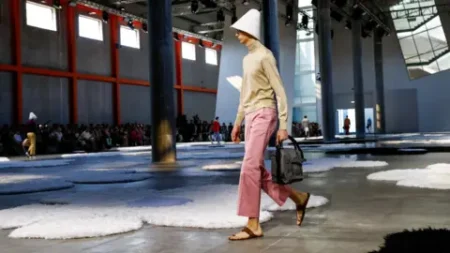The excitement surrounding Wimbledon 2025 is palpable, particularly on its opening day, which turned out to be extremely hot, shattering records. On Monday, the All England Club witnessed its highest recorded temperature for an opening day, reaching a scorching 31.4°C by 14:00 BST. This surpassed the previous record set in 2001, which registered at 29.3°C. Such intense heat posed significant challenges not just for the players but also for the ground staff and the eagerly awaited spectators.
In response to the extreme conditions, the Wimbledon organizers activated various measures to safeguard the health and performance of the players. Although the tournament’s heat rule, which allows for a 10-minute break during matches under extreme heat conditions, was not enforced immediately, players were still provided various cooling aids during changeovers. These included ice packs, cool towels, and ample access to hydration to ensure the players could maintain their performance levels despite the oppressive heat.
Spectators were advised to take precautions against the heat as well, utilizing hats, umbrellas, and towels for relief. Many brought portable fans to keep cool and were encouraged to take breaks in the shade. The conditions affected not only the players but also thousands of fans who gathered for the thrilling encounter; they faced a notably oppressive environment all day long. Even with the hot conditions, the All England Club reported that over 10,000 fans braved the heat, which prompted the club to suggest halting further travel to the event.
Unfortunately, some players were particularly hard hit by the conditions. Notably, two-time Wimbledon runner-up Ons Jabeur had to retire from her opening round in the face of heat exhaustion during her match against Bulgaria’s Viktoriya Tomova. Following an intense first set where Jabeur experienced critically high temperatures, she received medical attention but ultimately decided to withdraw. The match was still in its infancy, with the score sitting at 7-6 (7-5), 2-0 against her opponent when she chose to leave the court.
Players had differing views on the conditions. While American tennis star Frances Tiafoe claimed that he did not particularly feel the heat, stating, “I didn’t really feel like it was that hot,” other players like German competitor Eva Lys found it overwhelmingly difficult. Lys stated, “It’s really tough on the legs,” indicating that while some players thrived under pressure, others struggled significantly with the heat.
To enhance the players’ performance and health, the Wimbledon staff monitored the weather continuously using the Wet Bulb Globe Temperature (WBGT) index, which takes into account various factors, including air temperature, humidity, and surface temperature to assess the overall heat stress. Based on these readings, the tournament rules specify that players can take extended breaks after certain sets, which becomes crucial in such heat.
As Wimbledon kicked off with this unprecedented weather, the forecasts for the next day indicated that the heat was expected to persist. BBC Weather’s senior meteorologist George Goodfellow predicted another hot day with temperatures likely to hit mid-30s once again, making it important for players and spectators alike to remain vigilant about hydration and heat exposure.
In summary, Wimbledon 2025 opened under historically high temperatures, affecting players and fans. Organizers took various precautions, but health concerns arose due to the extreme heat. With the expected weather continuing, both competitors and attendees need to remain vigilant, taking necessary breaks and precautions to enjoy the excitement of Wimbledon while ensuring their safety and health. The combination of historical sporting events and rising temperatures creates a unique atmosphere at this year’s championship, setting the stage for a memorable tournament ahead.











